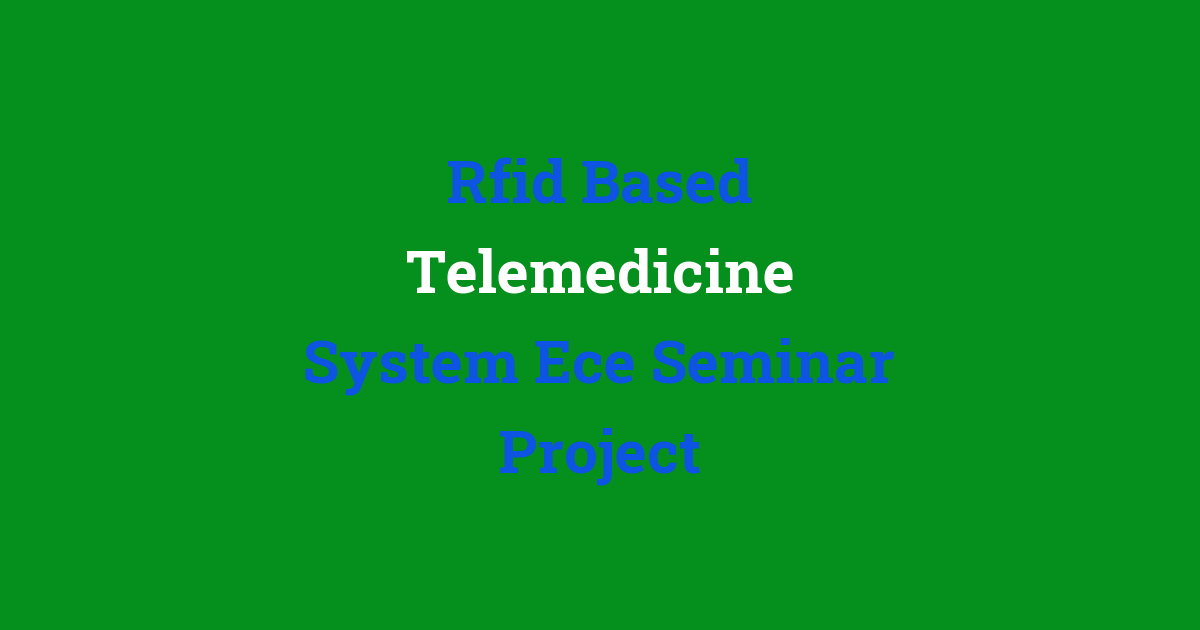ECE seminar project on a telemedicine system utilizing RFID technology.
RFID Based Telemedicine System ECE Seminar Project
Introduction
The advancements in technology have revolutionized the field of healthcare. One such innovation is the RFID based telemedicine system, which allows for remote monitoring and management of patient health. This system combines Radio Frequency Identification (RFID) technology with telemedicine to provide real-time access to medical information and services from a distance.
Problem Statement
Traditional healthcare systems face challenges such as limited access to healthcare facilities, lack of timely medical interventions, and high costs. In rural areas, access to quality healthcare is often a major concern due to the shortage of healthcare professionals and facilities. These issues can lead to delays in diagnosis and treatment, ultimately affecting patient outcomes.
Existing System
The current healthcare system relies heavily on in-person medical consultations and visits to healthcare facilities. While this system has its benefits, it is not always convenient for patients, especially those living in remote areas. Moreover, the traditional healthcare system is not equipped to handle the increasing demand for healthcare services, leading to long waiting times and overcrowded healthcare facilities.
Disadvantages
1. Limited access to healthcare services in rural areas.
2. Long waiting times for medical consultations.
3. High costs associated with in-person medical visits.
4. Lack of timely medical interventions.
5. Overcrowded healthcare facilities.
Proposed System
The RFID based telemedicine system aims to address the limitations of the existing healthcare system by incorporating RFID technology and telemedicine services. This system will enable healthcare professionals to remotely monitor patient health and provide timely medical interventions. Patients will be able to access healthcare services from the comfort of their homes, reducing the need for in-person medical visits.
Advantages
1. Improved access to healthcare services, especially in rural areas.
2. Real-time monitoring of patient health.
3. Timely medical interventions.
4. Reduced healthcare costs.
5. Increased convenience for patients.
Features
The RFID based telemedicine system will include the following features:
1. RFID tags attached to patient medical records for easy identification.
2. Remote monitoring of vital signs and health parameters.
3. Secure communication channels for consultations with healthcare professionals.
4. Automated alerts for abnormal health readings.
5. Integration with electronic health records for seamless data exchange.
Conclusion
The RFID based telemedicine system has the potential to revolutionize the healthcare industry by providing improved access to healthcare services, real-time monitoring of patient health, and timely medical interventions. By combining RFID technology with telemedicine services, this system offers a convenient and cost-effective solution for both patients and healthcare providers. With further research and development, the RFID based telemedicine system could become a standard practice in healthcare delivery, ultimately improving patient outcomes and reducing healthcare costs.

